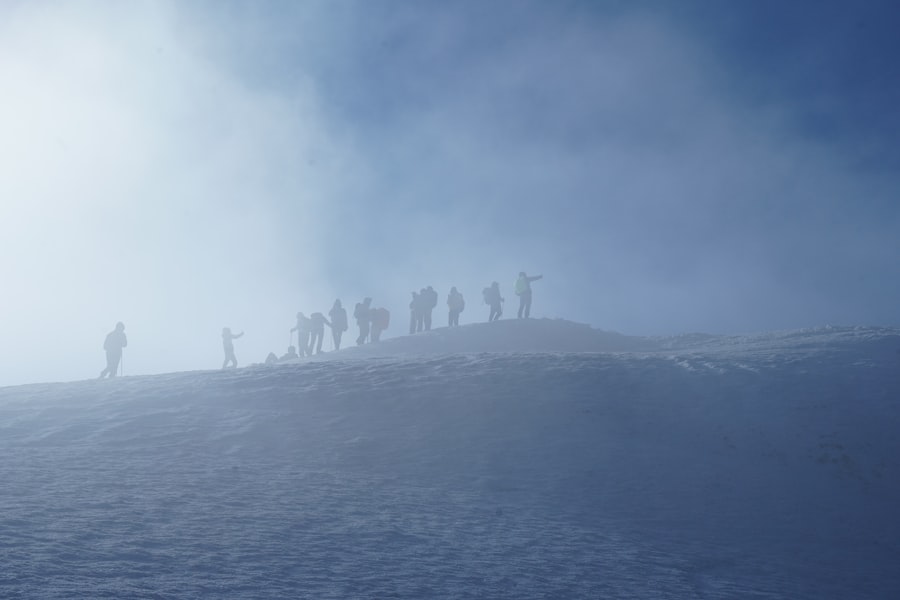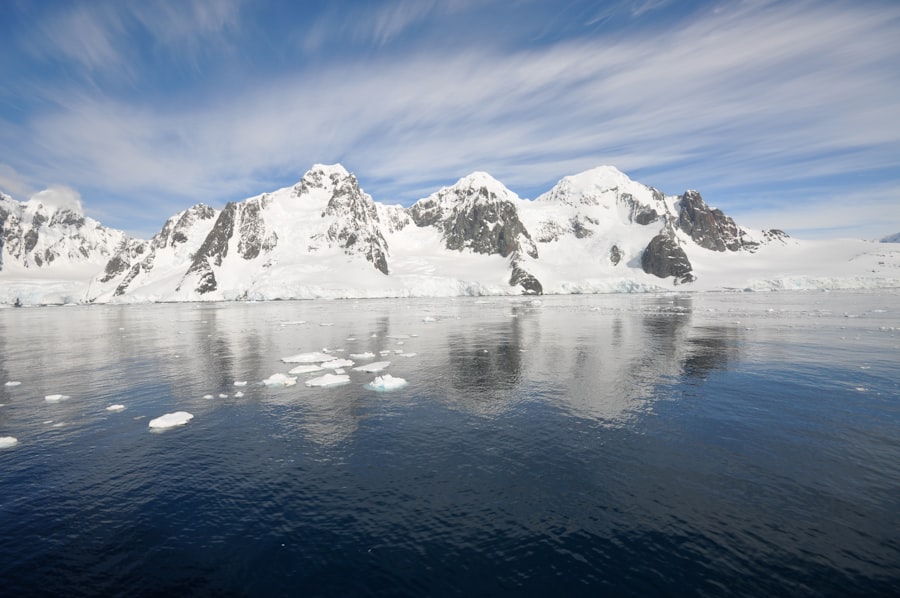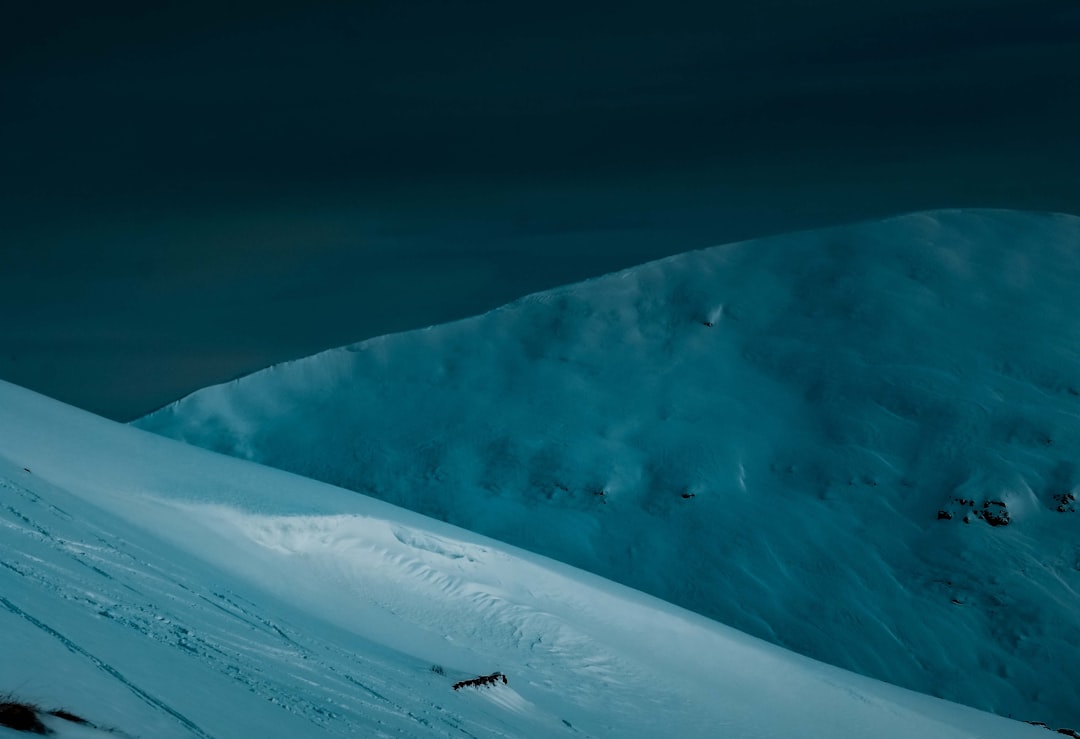Antarctica, often perceived as a barren and inhospitable land, holds secrets that are as ancient as the ice that blankets its surface. This vast continent, covered in glaciers and surrounded by frigid waters, is not merely a desolate expanse; it is a treasure trove of biological mysteries waiting to be uncovered. Beneath the thick layers of ice and snow lies a world teeming with life, much of which has remained hidden from human eyes for millennia.
The study of these ancient ecosystems is not only crucial for understanding the history of life on Earth but also for gaining insights into the resilience of life in extreme conditions. The secrets of Antarctica extend beyond its breathtaking landscapes and unique wildlife. They delve into the microscopic realm, where ancient microbes have adapted to survive in one of the harshest environments on the planet.
These microorganisms, some of which have existed for thousands or even millions of years, offer a glimpse into the past and hold potential keys to future scientific advancements. As researchers venture into this icy frontier, they are beginning to unravel the complex interactions between these microbes and their environment, shedding light on the fundamental processes that sustain life in extreme conditions.
Key Takeaways
- Ancient microbes in Antarctica offer valuable insights into extreme life and Earth’s history.
- Advanced technology is crucial for discovering and studying hidden Antarctic microbes.
- Climate change poses significant risks to the delicate microbial ecosystems in Antarctica.
- Collaborative international research efforts enhance understanding and protection of Antarctic microbes.
- Studying these microbes holds potential for breakthroughs in medicine, biotechnology, and environmental science.
The Importance of Ancient Microbes
Ancient microbes are not just relics of a bygone era; they are vital players in the Earth’s ecosystems. These microorganisms have evolved over eons, developing unique adaptations that allow them to thrive in extreme environments. Their significance extends beyond their survival strategies; they play crucial roles in biogeochemical cycles, influencing nutrient availability and energy flow within ecosystems.
By studying these ancient organisms, scientists can gain insights into the evolutionary history of life on Earth and the mechanisms that enable survival in extreme conditions. Moreover, ancient microbes possess a wealth of genetic diversity that can be harnessed for various applications. Their unique metabolic pathways and biochemical processes have the potential to revolutionize fields such as biotechnology, medicine, and environmental science.
Additionally, understanding how these microbes interact with their environment can inform conservation efforts and strategies for mitigating climate change impacts.
The Extremes of Antarctica

Antarctica is characterized by its extreme climate, with temperatures plunging to record lows and fierce winds sweeping across its icy landscape. The continent is home to some of the most inhospitable conditions on Earth, where life must adapt to survive. The average temperature in the interior can drop below -60 degrees Celsius (-76 degrees Fahrenheit), while coastal regions experience milder conditions but are still subject to harsh weather patterns.
These extremes create a unique environment that challenges the limits of biological survival. Despite these harsh conditions, Antarctica is not devoid of life. Microbial communities thrive in various niches, from glacial ice to subglacial lakes and even in the salty soils of coastal regions.
These microorganisms have developed remarkable adaptations that allow them to withstand freezing temperatures, high salinity, and limited nutrient availability. The study of these extremophiles provides valuable insights into the resilience of life and the potential for organisms to adapt to changing environments.
Uncovering Hidden Microbes in Antarctica
| Metric | Value | Description |
|---|---|---|
| Number of Microbial Species Identified | 150+ | Newly discovered microbial species in Antarctic ice and soil samples |
| Sampling Locations | 12 | Different sites across Antarctica including ice cores, subglacial lakes, and soil |
| Average Temperature of Sampling Sites | -20°C to -50°C | Range of temperatures where microbes were found |
| Depth of Ice Core Samples | Up to 500 meters | Depth from which microbes were extracted |
| Percentage of Novel Genetic Sequences | 35% | Proportion of genetic material not matching known databases |
| Metabolic Types Discovered | Chemoautotrophs, Psychrophiles, Anaerobes | Types of metabolism adapted to extreme cold and low nutrients |
| Potential Biotechnological Applications | Enzymes for cold processes, Antibiotics, Bioremediation | Possible uses of Antarctic microbes in industry and medicine |
| Research Duration | 5 years | Time span of the microbial discovery project |
The quest to uncover hidden microbes in Antarctica has become a focal point for researchers seeking to understand the continent’s unique ecosystems. Recent expeditions have employed advanced techniques to sample ice cores, sediment layers, and subglacial environments, revealing a diverse array of microbial life previously unknown to science. These discoveries challenge preconceived notions about the limits of life and highlight the importance of exploring extreme environments.
One notable finding has been the identification of ancient microbial communities trapped within glacial ice. These microorganisms have been preserved for thousands of years, providing a snapshot of past ecosystems and climate conditions. By analyzing DNA sequences extracted from these ice cores, scientists can reconstruct ancient microbial communities and gain insights into how they responded to historical climate changes.
This research not only enhances understanding of microbial evolution but also informs predictions about how current climate change may impact microbial ecosystems.
The Role of Technology in Microbe Discovery
Advancements in technology have revolutionized the field of microbiology, enabling researchers to explore previously inaccessible environments and uncover hidden microbial diversity. Techniques such as metagenomics, which involves sequencing genetic material directly from environmental samples, have allowed scientists to identify and characterize microbial communities without the need for culturing organisms in the lab. This approach has proven particularly valuable in extreme environments like Antarctica, where traditional methods may be challenging or impossible.
In addition to metagenomics, other technologies such as remote sensing and high-throughput sequencing have facilitated large-scale studies of microbial diversity across different Antarctic habitats. These tools enable researchers to analyze vast amounts of data quickly and efficiently, leading to new discoveries about microbial interactions and their roles within ecosystems. As technology continues to advance, it is likely that even more groundbreaking findings will emerge from ongoing research in this remote region.
Potential Applications of Ancient Microbes

The potential applications of ancient microbes extend far beyond academic curiosity; they hold promise for various industries and scientific fields. One area where these microorganisms could make a significant impact is biotechnology. Enzymes derived from extremophiles are already being utilized in industrial processes such as biofuel production, waste treatment, and food processing.
Their ability to function under extreme conditions makes them invaluable for applications that require robustness and efficiency. Furthermore, ancient microbes may offer insights into novel pharmaceuticals and medical treatments. The unique biochemical properties of these organisms could lead to the discovery of new antibiotics or antiviral compounds capable of combating resistant strains of pathogens.
As researchers continue to explore the genetic diversity found in Antarctic microbes, they may uncover novel bioactive compounds with therapeutic potential that could revolutionize modern medicine.
Challenges in Studying Antarctic Microbes
While the study of Antarctic microbes presents exciting opportunities, it is not without its challenges. The extreme environment poses logistical difficulties for researchers attempting to access remote locations and collect samples. Harsh weather conditions can hinder fieldwork, while the isolation of many sites makes transportation and communication difficult.
Additionally, the delicate nature of Antarctic ecosystems necessitates careful planning to minimize human impact during research activities. Another significant challenge lies in the complexity of microbial communities themselves. The interactions between different species within these communities can be intricate and difficult to decipher.
Understanding how these microorganisms coexist and compete for resources requires sophisticated analytical techniques and interdisciplinary collaboration among scientists from various fields. Despite these challenges, researchers remain committed to unraveling the mysteries of Antarctic microbes and their ecological significance.
The Impact of Climate Change on Antarctic Microbes
Climate change poses a significant threat to Antarctic ecosystems, including microbial communities that have thrived for millennia. Rising temperatures are causing glaciers to melt at an unprecedented rate, altering habitats and potentially disrupting established microbial interactions. As ice retreats, new environments are exposed, leading to shifts in nutrient availability and competition among microbial species.
Some studies suggest that warming temperatures may enhance microbial activity in certain regions, leading to increased carbon release from permafrost and contributing to global climate change feedback loops. Understanding how these changes affect microbial communities is crucial for predicting future ecological dynamics and developing effective conservation strategies.
Collaboration in Antarctic Microbe Research
Collaboration has become essential in advancing research on Antarctic microbes, as scientists from diverse disciplines come together to tackle complex questions about life in extreme environments. International partnerships facilitate knowledge sharing and resource pooling, enabling researchers to conduct comprehensive studies that would be challenging for individual teams alone. Collaborative efforts also enhance data collection efforts across different regions of Antarctica, providing a more holistic understanding of microbial diversity.
Furthermore, interdisciplinary collaboration allows for innovative approaches to studying microbial communities. By integrating expertise from microbiology, ecology, climate science, and technology development, researchers can develop more effective methodologies for sampling and analyzing microbial populations. This collaborative spirit fosters creativity and drives progress in uncovering the secrets hidden within Antarctica’s icy depths.
Protecting Antarctic Microbial Ecosystems
As research efforts expand in Antarctica, it becomes increasingly important to prioritize the protection of its fragile microbial ecosystems. Human activities associated with scientific exploration can inadvertently introduce contaminants or disrupt natural habitats. To mitigate these risks, strict protocols are implemented to minimize environmental impact during fieldwork.
Additionally, raising awareness about the significance of Antarctic microbes is crucial for garnering support for conservation initiatives. Educating policymakers and the public about the ecological importance of these microorganisms can help foster a sense of stewardship for this unique environment. By promoting responsible research practices and advocating for protective measures, scientists can ensure that future generations will continue to benefit from the knowledge gained through Antarctic microbe research.
Future Prospects for Antarctic Microbe Research
The future prospects for Antarctic microbe research are promising as technological advancements continue to evolve and our understanding of these ecosystems deepens. Ongoing studies are likely to reveal new species and uncover previously unknown interactions within microbial communities. As researchers refine their methodologies and expand their collaborations, they will be better equipped to address pressing questions about microbial resilience in the face of climate change.
Moreover, as interest in bioprospecting grows, there may be increased investment in exploring the potential applications of ancient microbes across various industries. This could lead to breakthroughs that not only benefit science but also contribute positively to society by addressing global challenges such as food security and health care. In conclusion, Antarctica’s hidden microbial treasures offer a wealth of knowledge waiting to be explored.
As researchers continue their quest to uncover these secrets, they will not only enhance our understanding of life’s resilience but also pave the way for innovative solutions that harness the power of ancient microbes for future generations.
Recent explorations in Antarctica have unveiled intriguing secrets that challenge our understanding of the continent’s history and geology. For those interested in delving deeper into these revelations, a related article can be found at XFile Findings, which discusses various findings and theories surrounding the mysteries of Antarctica. This resource provides a comprehensive overview of the ongoing research and discoveries that continue to captivate scientists and enthusiasts alike.
WATCH THIS 🛑 The Antarctic City NASA Can’t Erase
FAQs
What is meant by “Antarctic secrets”?
“Antarctic secrets” generally refer to undisclosed or little-known information about Antarctica, including its geology, climate history, hidden ecosystems, ancient artifacts, or unusual phenomena discovered beneath its ice sheets.
Has any real evidence been found supporting mysterious claims about Antarctica?
Scientific research has uncovered many fascinating facts about Antarctica, such as ancient microbial life, subglacial lakes, and climate records trapped in ice cores. However, claims of extraordinary or paranormal secrets often lack credible evidence and are not supported by mainstream science.
What kind of scientific evidence has been discovered in Antarctica?
Researchers have found evidence of past climate changes, fossilized remains of prehistoric plants and animals, subglacial lakes like Lake Vostok, and meteorites preserved in the ice. These findings help scientists understand Earth’s history and climate systems.
Are there any ancient civilizations or artifacts found in Antarctica?
No verified evidence of ancient civilizations or artifacts has been found in Antarctica. The continent has been covered by ice for millions of years, making it unlikely for human settlements to have existed there in recorded history.
How do scientists explore and gather evidence in Antarctica?
Scientists use ice drilling, remote sensing technologies, satellite imagery, and submersible vehicles to study Antarctica’s ice sheets, geology, and ecosystems. Research stations on the continent facilitate ongoing scientific investigations.
Is there any evidence of extraterrestrial activity in Antarctica?
There is no credible scientific evidence supporting extraterrestrial activity in Antarctica. Such claims are typically based on speculation or conspiracy theories without factual backing.
Why is Antarctica important for scientific research?
Antarctica provides unique insights into Earth’s climate history, glaciology, and ecosystems. Its ice cores contain records of atmospheric composition going back hundreds of thousands of years, crucial for understanding global climate change.
Can the secrets of Antarctica impact our understanding of climate change?
Yes, studying Antarctica’s ice cores and glaciers helps scientists track past climate variations and predict future trends, making it vital for understanding and addressing global climate change.
